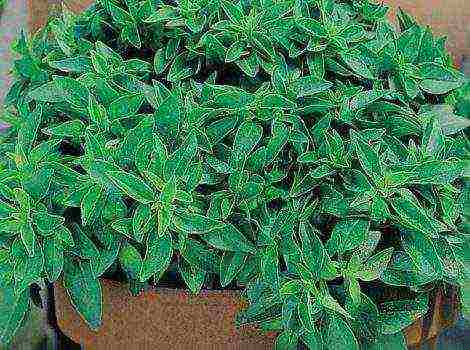Agriculture and Agro-industrial complex.
Option 1
-
The main link of the agro-industrial complex is
A) light industry B) trade C) agriculture.
-
For the production of which culture Russia ranks first in the world
A) wheat B) rice C) corn D) buckwheat
-
Read the text
“Tea has been grown in the Krasnodar Territory for over 10 years. This is the northernmost tea in the world. This year, tea growers are going to harvest more than 2000 tons of tea, if, of course, the weather does not interfere. Last year, due to the cold winter and long drought in the summer, we managed to collect only 600 tons of tea. "
What feature of agriculture does the article illustrate?
A) seasonality B) dependence on natural conditions
C) limited land resources D) the main means of production is land
-
The most important grain crop in Russia is:
A) corn B) rice C) wheat D) rye
-
Within which of the natural zones of Russia are the most favorable conditions for maintaining Agriculture:
A) mixed forests and deciduous forests B) steppes and forest-steppe
C) taiga D) tundra
-
Find matches:
Natural area Specialization of agriculture
-
Tundra A) sheep breeding
-
Forest-steppe and steppe B) rye, barley, flax
-
Forest zone B) reindeer husbandry
-
Semi-deserts D) wheat, corn, sugar beet
E) soy, rice, tea
-
Which of the following is true:
-
the main share of agricultural land in Russia is arable land.
-
In terms of arable land per capita, Russia is inferior to many countries of the world.
-
Both are true
-
For the placement of enterprises, which of the listed sectors of the food industry the consumer factor has the main influence:
A) fish B) bakery C) sugar D) canning E) pasta
9. What are the differences between agricultural production and industrial
10.Using the atlas, describe the distribution of sugar beet crops in Russia
11. Give two examples of possible negative impacts on soils.
12. Give 2 examples of food industry sectors for which the raw material factor influences.
Agriculture and Agro-industrial complex.
Option 2
1. The link of the APK is not
A) food industry B) production of mineral fertilizers
C) agriculture. D) forestry
-
For the production of which culture Russia ranks first in the world
A) wheat B) rye C) sugar beet D) oats
-
What feature of agriculture is illustrated by the graph?
A) seasonality B) dependence on natural conditions
C) limited land resources D) dependence on soil fertility
-
The leading branch of Russian livestock breeding is:
A) pig breeding B) sheep breeding C) poultry breeding D) cattle breeding
-
Within which of the natural zones of Russia are the least favorable conditions for farming:
A) taiga B) steppes and forest-steppe
C) tundra D) mixed forests and deciduous forests
-
Find matches:
-
Cereals A) fiber flax
-
Industrial crops B) rye
C) buckwheat
D) corn
E) rice
E) sugar beet
G) sunflower
-
which statement is correct
A) the main share of agricultural land in Russia is pasture
B) in the steppe zone, the share of agricultural land is the largest
D) Both are correct
-
The location of enterprises, which of the listed sectors of the food industry is mainly influenced by the raw material factor:
A) cereal B) confectionery C) sugar D) meat E) pasta
9. What are the main types of agricultural land
10.Using an atlas, describe the distribution of reindeer husbandry areas in Russia
-
Give two examples of the negative impact of animal husbandry on the environment Wednesday.
-
Give 2 examples of food industry sectors for which the consumer factor influences.
The main link in the agro-industrial complex is A) light industry B) trade C) agriculture. read the text “tea has been grown in the Krasnodar Territory for more than 10 years. This is the northernmost tea in the world.This year, tea growers are going to harvest more than 2000 tons of tea, if, of course, the weather does not interfere. Last year, due to the cold winter and long drought in the summer, we managed to collect only 600 tons of tea. ” What feature of agriculture does the article illustrate? A) seasonality B) dependence on natural conditions C) limited land resources D) land is the main means of production Find the correspondence: Natural zone Specialization of agriculture Tundra A) sheep breeding Forest-steppe and steppe B) rye, barley, flax Forest zone C) reindeer breeding Semi-desert D ) wheat, corn, sugar beet E) soybeans, rice, tea
Answers:
1) c; 2) b; 3) e or d I don’t know for sure
Tea plantations in the Krasnodar Territorymono_polistJanuary 27th, 2017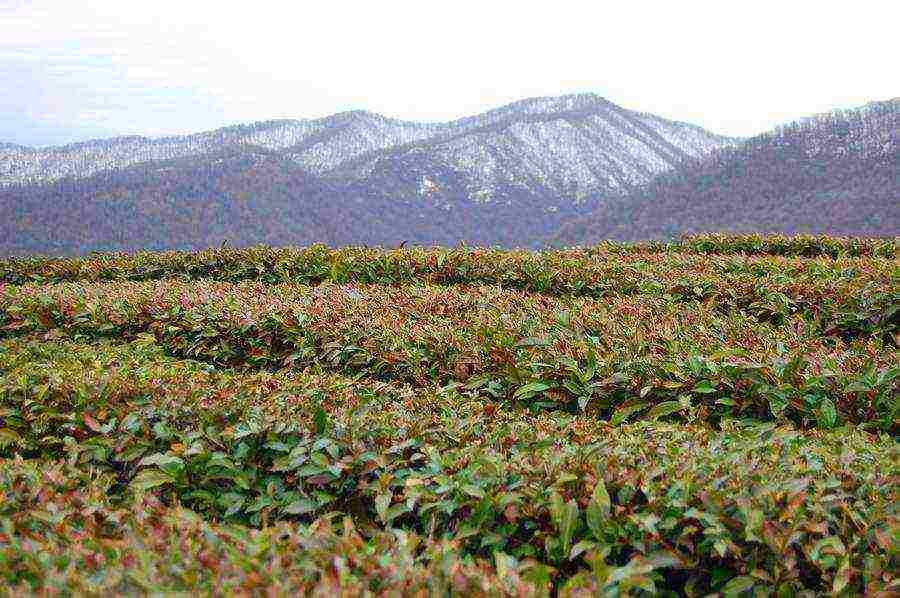
Many people know the tea brand "Krasnodar Tea", but few know where this tea is grown. We found plantations near the village of Izmailovka, Sochi.
How to get there?From the Sochi railway station there are buses 120 and 180. The bus terminus is the village of Semenovka (we don't need to go there). We thought we should go to the village. Izmailovka, but the driver advised us to go outside the village, it was here that we saw tea plantations. There is a warning sign in front of the entrance that it is forbidden for strangers to be here, but does that hold tourists back?
2. First, we saw tea bushes near the road, they were completely sad, I was even upset that we came here. But you have to climb higher, where you meet even green gorgeous fields.
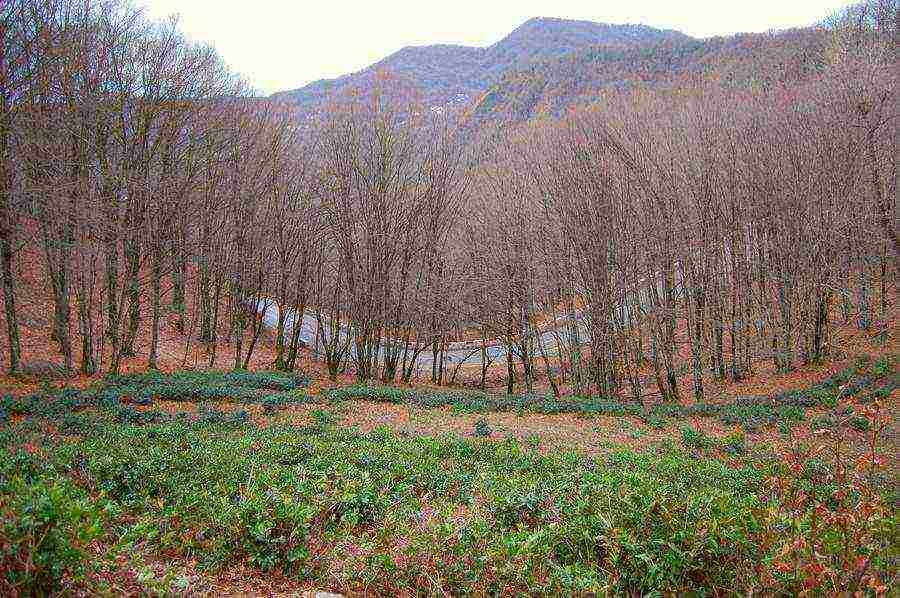
3. This is how our seagull grows.

4.
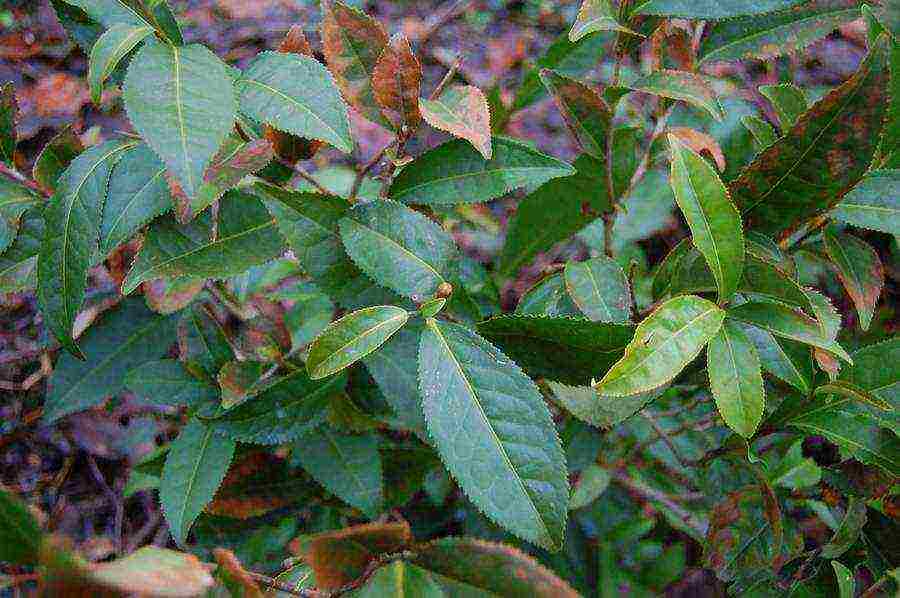
5. Until 2012, Russian (Krasnodar) tea was the northernmost industrially grown tea in the world.
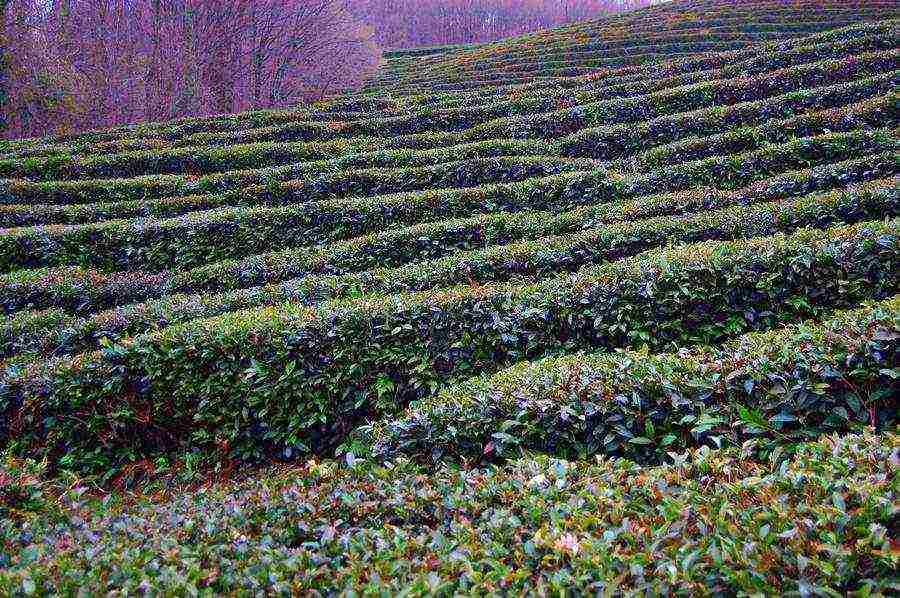
6. The first tea plantation "Krasnodar Tea" was located near the village of Solokhaul (Sochi) in 1901. The seeds were brought from Georgia.
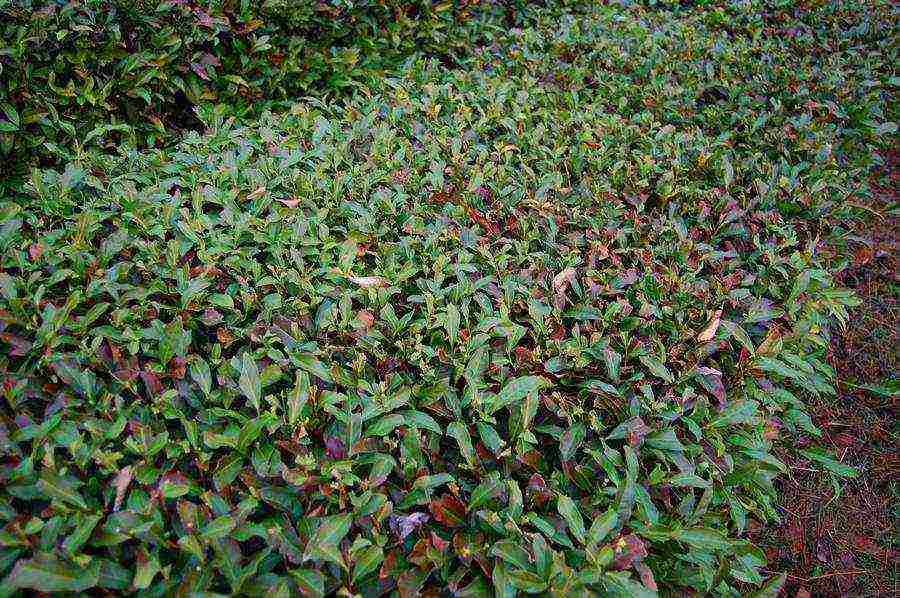
7. Tea plantations in the Krasnodar Territory are the only ones in Russia, nowhere else do they grow tea in the country, because only here are the subtropics, a favorable climate for growing.
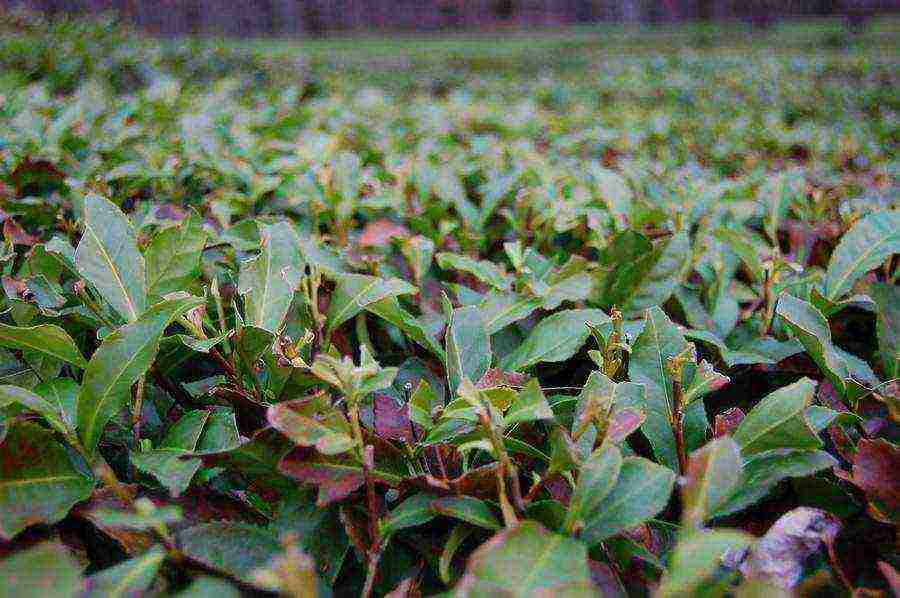
8. In summer, paid excursions to the plantations are held for tourists.
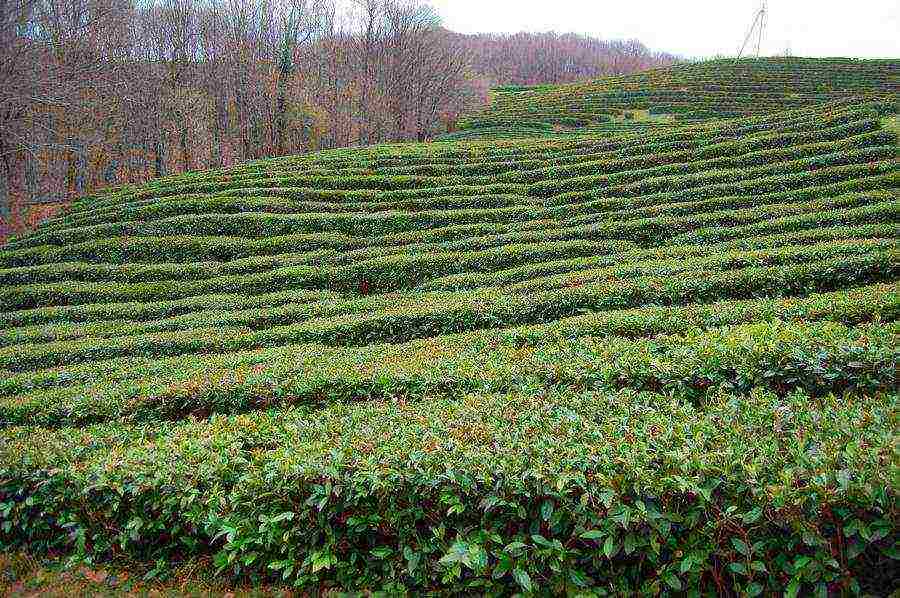
9. Honestly, I don't like Krasnodar tea. But for the sake of interest in the village of Izmailovka, we went to the brand store of Krasnodar Tea (aka Matsesta). There we chose green long tea with lemon balm and mint for 215 rubles 100 grams, the same tea I saw in Tabris. I really tried it, but I didn’t like other cheaper varieties, including those with the “Matsestinsky” brand.
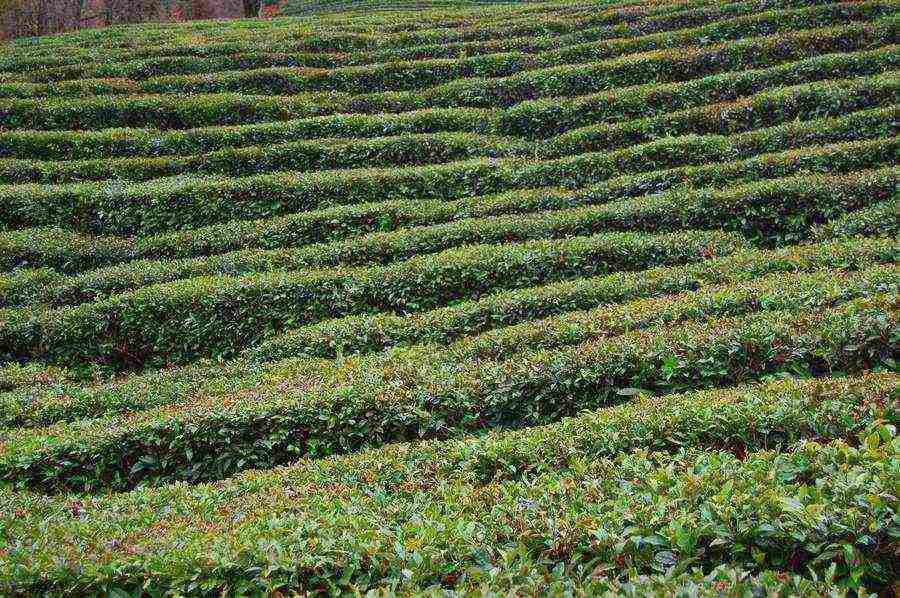
10. It is a mistake to believe that a tea bush will smell, it does not smell like tea at all :))
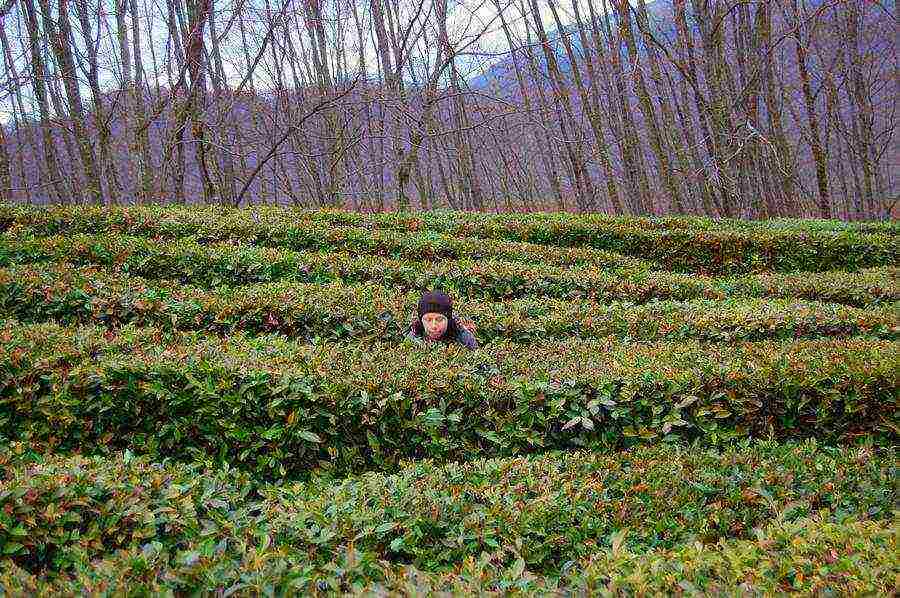
11. If you want to get acquainted with the products of Krasnodar tea, go to the site
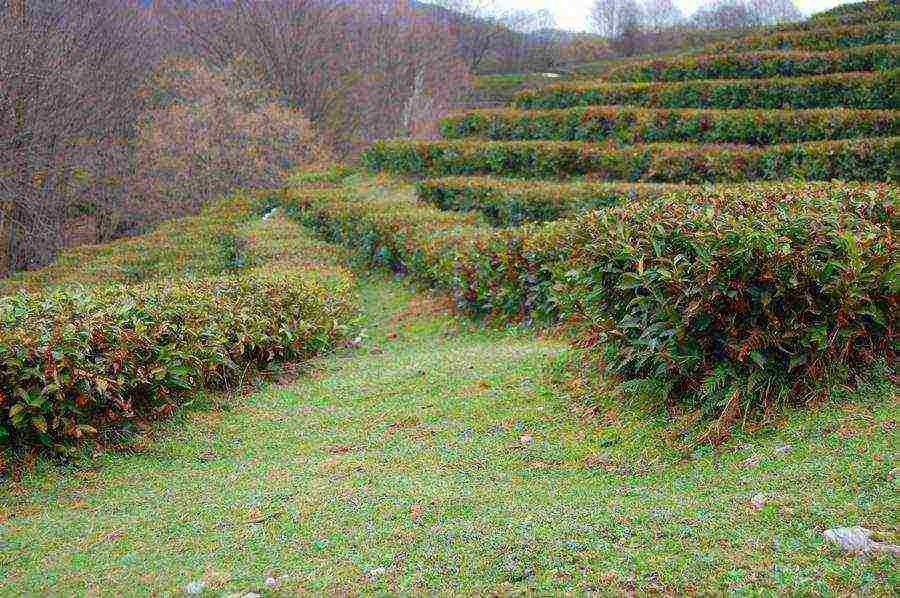
12.
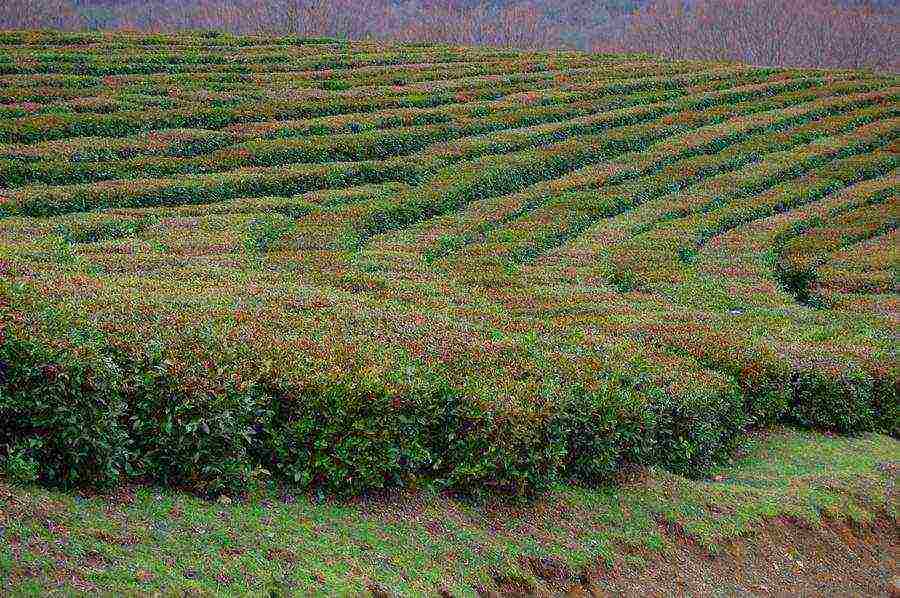
13.
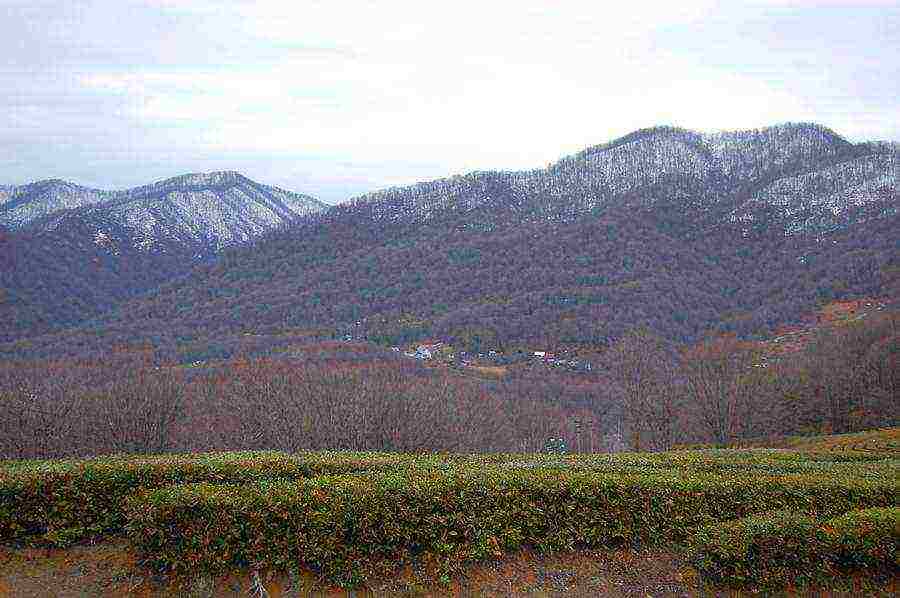
14.
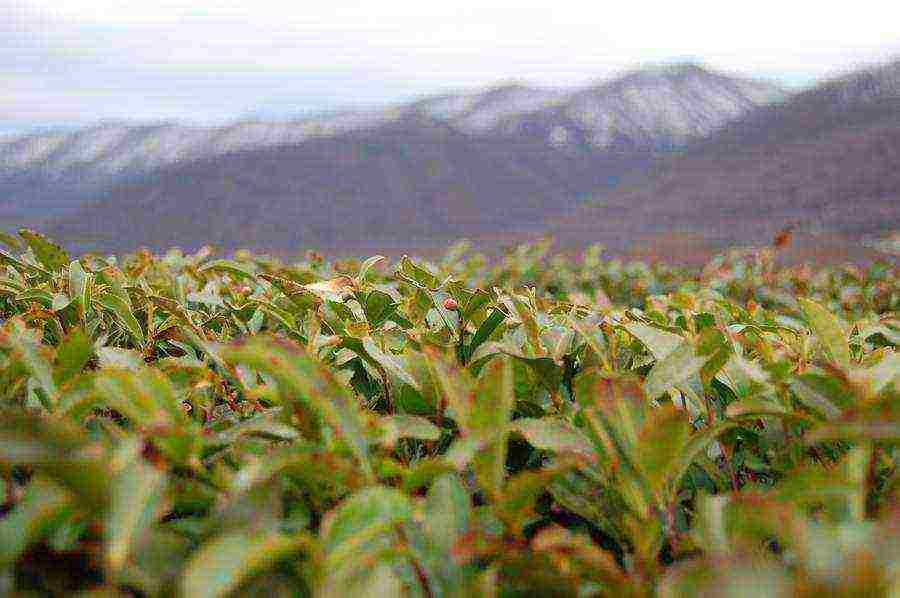
15.
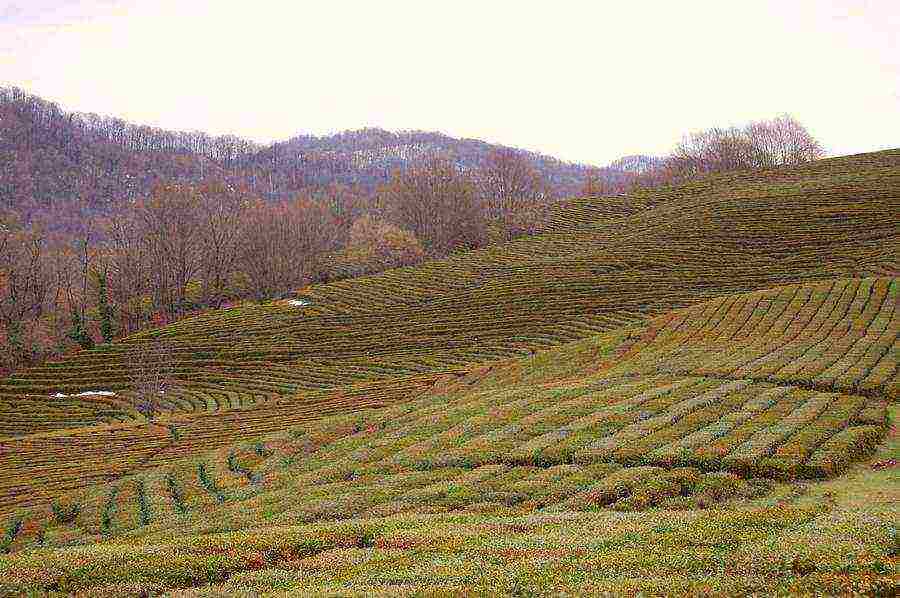
16. The village of Izmailovka.
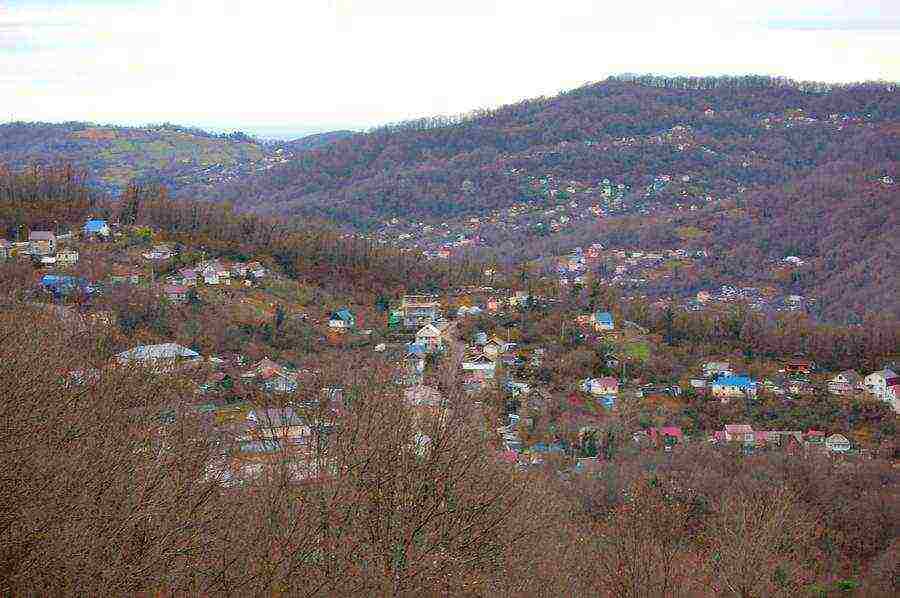
17.
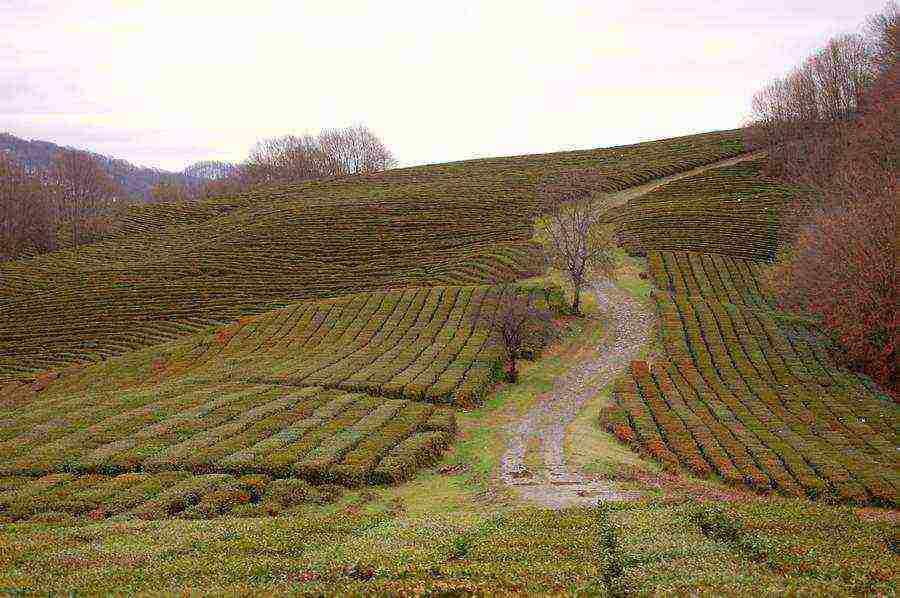
18. Going down to the village of Izmailovka, we found another plantation with a house.
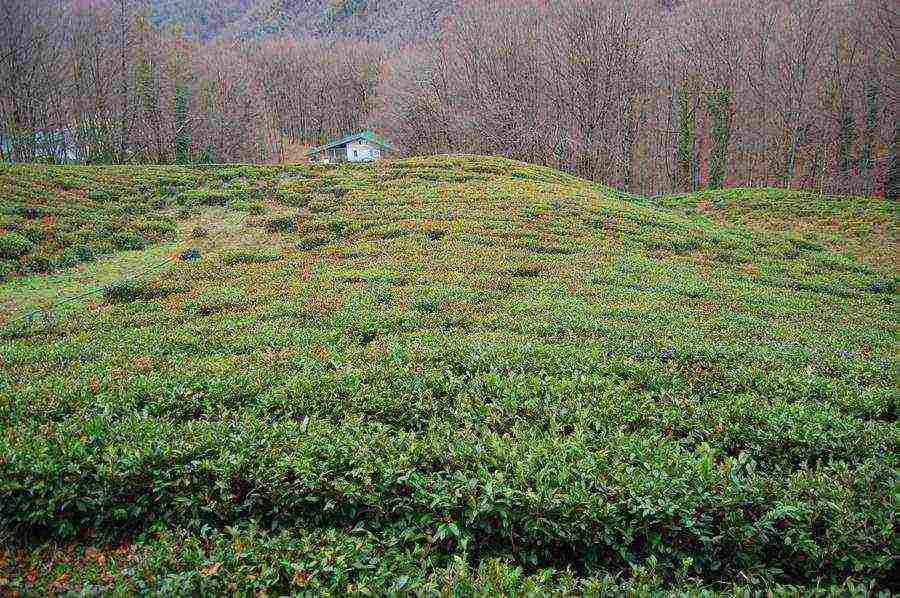
MSC
1. Feature that characterizes mechanical engineering: A. Combination is developed in mechanical engineering.
B. High concentration of production.
B. Complex industry composition.
2. In mechanical engineering, the factor of production location is presented: A. Ecological.
B. Fuel.
B. Transport.
3. Manufacturing of finished products: A. Detail specialization. B. Subject specialization.
B. Functional specialization.
4. The production of metallurgical equipment depends on the factor: A. Metal consumption and material consumption.
B. Labor and transportation.
B. Consumer and specialization.
5. For specialization and cooperation in mechanical engineering it is necessary: A. Qualified labor force.
B. Development of transport infrastructure.
B. Availability of sources of raw materials and markets for products.
-
The main link of the agro-industrial complex is
A) light industry B) trade C) agriculture.
-
For the production of which culture Russia ranks first in the world
A) wheat B) rice C) corn D) buckwheat
-
Read the text
“Tea has been grown in the Krasnodar Territory for over 10 years. This is the northernmost tea in the world. This year, tea growers are going to harvest more than 2000 tons of tea, if, of course, the weather does not interfere.Last year, due to the cold winter and long drought in the summer, we managed to collect only 600 tons of tea. ”
What feature of agriculture does the article illustrate?
A) seasonality
B) dependence on natural conditions
C) limited land resources
D) the main means of production is land
-
The most important grain crop in Russia is:
A) corn B) rice C) wheat D) rye
-
Within which of the natural zones of Russia are the most favorable conditions for farming:
A) mixed forests and deciduous forests
B) steppe and forest-steppe
C) taiga
D) tundra
Test on the topic "Russian Economy"
-
The Russian economy is:
A) a set of enterprises producing homogeneous products, or institutions providing homogeneous services.
B) a set of enterprises and institutions that meet the needs of the population with their work.
C) the relationship of labor and means of production.
-
Production facility is:
A) what or with the help of what a person works and what he processes.
B) what or with the help of what a person works.
C) what it processes.
3... The main task of the economy is:
A) what and how to produce; B) what and for whom to produce;
C) what and how to produce, for whom the products are intended.
4. Industry -:
A) a set of enterprises producing homogeneous products, or institutions providing homogeneous services.
B) a set of enterprises and institutions that meet the needs of the population with their work.
C) the relationship of labor and means of production.
5. What spheres the economy is divided into:
A) production and material
B) non-production and intangible
C) production and non-production
Metallurgy
1. The largest enterprise in the metallurgical industry is:
a) conversion plant b) full cycle plant c) rolling plant d) alumina plant
-
Please indicate an error in the list of heavy non-ferrous metals: a) copper b) nickel c) silver d) zinc
-
Athomelessmetal production technology is absent stage of production: a) cast iron b) steel c) rolled
-
Select one of the largest deposits of copper-nickel ores in the Russian Federation:
Yamburgskoe / Norilsk / Tyrnyauzskoe / Khibinskoe
-
What is the leading factor in the location of plants for the production of metal aluminum?
a) raw materials b) energy c) labor d) transport
Test work on the topic "European North". Option 1.
... Find the error in the list of regions included in the Northern Region:
1) Komi-Permyak Autonomous Okrug, 2) Komi Republic, 3) Vologda Region, 4) Nenets Autonomous District.
2. Thanks to the navigable canals in the southwestern part of the Northern Region, it can
Can river transport from here get to the coast of the sea basins:
1) no, 2) up to one - the Arctic Ocean, 3) up to two - also the Atlantic Ocean,
4) up to three - also the Caspian Sea.
3. Find an error in the list of fossil fuels that are mined in the North
area:
1) hard coal, 2) brown coal, 3) oil, 4) natural gas.
4. Most of the indigenous peoples of the Northern Region are:
1) to the Ural-Yukaghir family and profess traditional beliefs;
2) to the Ural-Yukaghir family and professes Orthodoxy;
3) belongs to the Altai family and professes traditional beliefs;
4) belongs to the Altai family and professes Orthodoxy.
5. The main seaport and the largest city in terms of population in the Northern Region:
1) Murmansk, 2) Arkhangelsk, 3) Petrozavodsk, 4) Naryan-Mar.
Test work on the topic: "Ural economic region". Option 1.
1. The group of regions that are part of the Uralsky district:
1) Perm, Sverdlovsk, Kirov regions; 2) Rep. Udmurtia, Bashkortostan and Komi;
3) Komi-Permyatsky, Nenets and Khanty-Mansi Authors. districts; 4) Kurgan, Chelyabinsk and Orenburg regions.
2. Find an error in the list of non-ferrous metal ores, the reserves of which are available in the Urals region:
1) nickel; 2) copper; 3) aluminum; 4) pewter.
3. The cities - millionaires of the Ural region: 1) Yekaterinburg and Chelyabinsk; 2) Chelyabinsk and
Orenburg; 3) Orenburg and Samara; 4) Samara and Yekaterinburg.
4. Find an error in the list of industries of industrial specialization of the Ural region:
1) light industry; 2) chemical; 3) non-ferrous metallurgy; 4) mechanical engineering.
5. Regions in which the bulk of oil and gas is produced in the Urals region:
1) Republic of Udmurtia, Sverdlovsk region; 2) Sverdlovsk and Orenburg regions;
3) Orenburg region. and the Republic of Bashkortostan; 4) Republics of Bashkortostan and Udmurtia.
6. The Urals region is the leader in Russia in the production of mineral fertilizers:
1) nitrogen; 2) phosphoric; 3) potash; 4) all kinds.
7. The main grain crop in the Ural region: 1) oats; 2) corn; 3) winter wheat;
Fuel and energy complex
I.The ratio of the extraction of different types of fuel and the generated energy "their use in the economy is called:
a) fuel industry;
b) fuel and energy complex;
c) energy resources;
d) fuel and energy balance.
2. The cheapest energy is produced at: a) nuclear power plants; b) hydroelectric power station; c) TPP.
3. The largest region for Russian gas production is:
a) Yakutsk;
b) Orenburg-Astrakhan;
c) West Siberian;
d) the shelf of the Barents Sea.
4. Set the correspondence.
Region: Fuel types:
1. Pechora basin; a) oil;
2. Urengoyskoye field; b) gas;
3. Volga-Ural base; c) brown coal;
4. Moscow region swimming pool; d) hard coal.
5. The cheapest coal in Russia is mined in the basin:
a) Lensky;
b) Donetsk;
c) Kansk-Achinsk;
d) Pechora.
role work on the topic: "Povolzhsky economic region". Option 1.
1. Indicate the region of Russia that is part of the Volga region: 1) Republic of Dagestan;
2) Republic of Udmurtia; 3) Samara region; 4) Orenburg region.
2. Indicate an incorrect description of the Povolzhsky District State Enterprise: 1) stretched along the Volga; 2) has access to the state border of Russia; 3) has access to the World Ocean, 4) is adjacent to the Central Region of Russia.
3. The following are extracted from chemical raw materials in the Volga region: 1) potash salts; 2) table salt; 3) phospho-
rites; 4) apatites.
4. The population density in the Volga region: 1) high throughout the entire territory of the region; 2) mostly high, but decreases to the south; 3) mostly low, but rises to the south; 4) low throughout the district.
5. The number of urban agglomerations-millionaires in the Volga region:
1) one; 2) two; 3) three; 4) four.
6. Find an error in the list of industries of industrial specialization of the Volga region:
1) timber and woodworking industry; 2) food industry; 3) chemical industry; 4) mechanical engineering.
7. Hydroelectric power plants of the Volga region do not include: 1) Volzhskaya; 2) Balakovskaya;
3) Volgograd; 4) Saratov.
8. Establish a correspondence between the cities of the Volga region and the industries developed in them. Volga region cities: Industry:
A. VOLGOGRAD. 1) automotive industry;
B. TOGLIATTI. 2) petrochemistry;
V. NIZHNEKAMSK. 3) the fishing industry;
ASTRAKHAN. 4) tractor construction.
9. Agricultural production, which is spread throughout the territory of the Volga region: 1) sheep breeding; 2) growing sugar beet; 3) growing sunflower;
4) growing cereals.
West Siberian region. Option 1.

